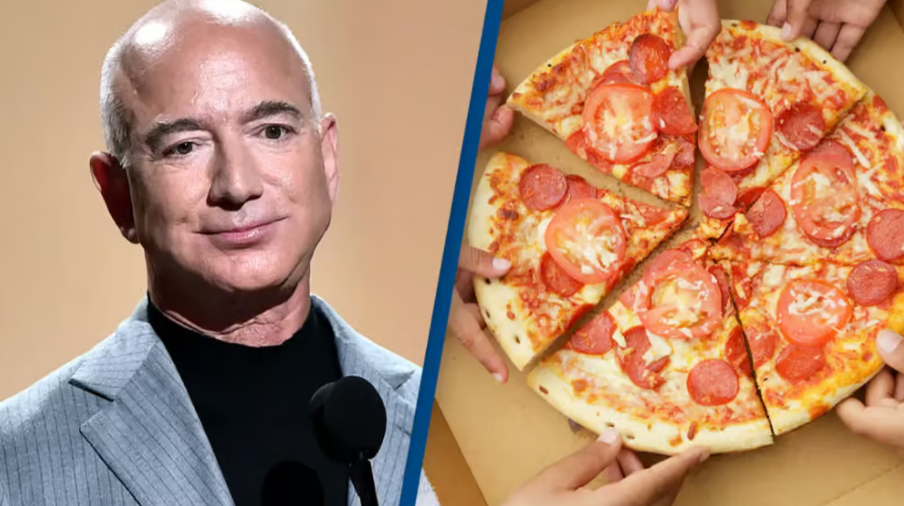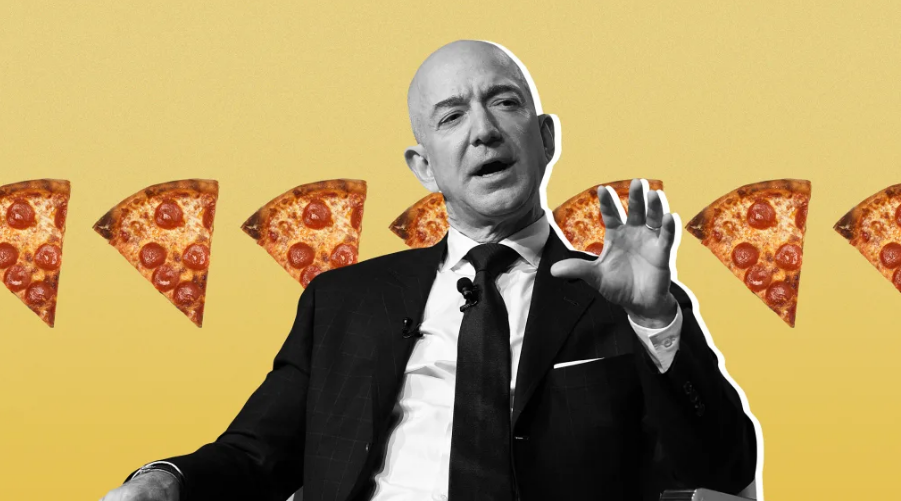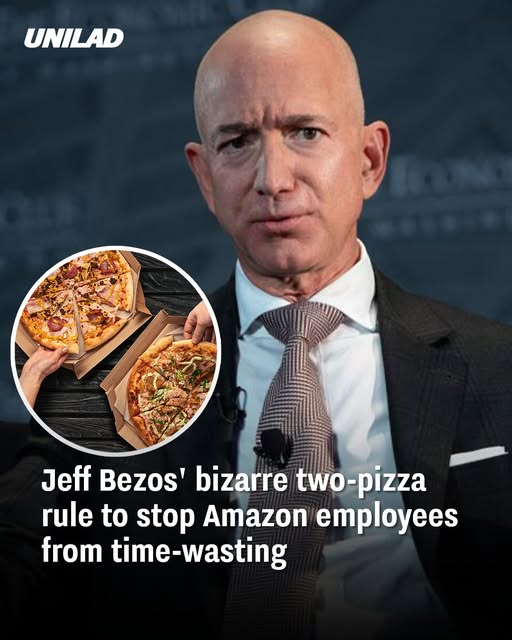Jeff Bezos, the founder of Amazon, is renowned for his innovative leadership strategies that have significantly contributed to the company’s success. Among these strategies is the “Two-Pizza Rule,” a concept aimed at enhancing team efficiency and productivity.
The Origin of the Two-Pizza Rule
The Two-Pizza Rule is a straightforward yet effective guideline: no team should be so large that it cannot be fed with two pizzas. This principle typically limits team sizes to about five to seven members. Bezos introduced this rule to prevent the inefficiencies often associated with larger groups, such as prolonged decision-making processes and diluted accountability. By maintaining smaller teams, Amazon fosters an environment where each member’s contributions are more visible and impactful.
Enhancing Productivity Through Small Teams
Smaller teams, as advocated by the Two-Pizza Rule, tend to communicate more effectively and make decisions more swiftly. This structure reduces the layers of bureaucracy and encourages a more agile approach to problem-solving. At Amazon, this methodology has been instrumental in driving innovation and maintaining a customer-centric focus. Teams are empowered to take ownership of their projects, leading to increased motivation and accountability.

Real-World Applications and Benefits
The implementation of the Two-Pizza Rule has yielded tangible benefits for Amazon. For instance, it has been particularly effective in the company’s software development processes, where small, autonomous teams can rapidly develop and deploy new features. This approach not only accelerates innovation but also allows for more personalized customer experiences. Moreover, the rule has been adopted by other organizations seeking to emulate Amazon’s efficiency and adaptability.
Addressing Potential Challenges
While the Two-Pizza Rule offers numerous advantages, it is not without challenges. Coordinating multiple small teams requires robust communication channels to ensure alignment with the organization’s broader objectives. Additionally, there is a risk of siloed operations if teams become too insular. To mitigate these issues, Amazon emphasizes clear goal-setting and cross-team collaboration, ensuring that all teams work cohesively towards common goals.
Broader Implications for Organizational Design
The principles underlying the Two-Pizza Rule have broader implications for organizational design. They suggest that smaller, more autonomous teams can lead to greater innovation and responsiveness. This concept challenges traditional hierarchical structures and promotes a more decentralized approach to management. Organizations adopting this model may find themselves better equipped to navigate the complexities of today’s fast-paced business environment.

The Rule’s Lasting Influence
Over time, the Two-Pizza Rule has gained attention far beyond Amazon. Startups and major corporations alike have experimented with similar small-team models to boost efficiency. Leadership experts frequently cite the rule as an example of practical, people-centered management. By prioritizing quality over quantity in team composition, Jeff Bezos has left a lasting legacy on how modern businesses think about collaboration and performance.
Conclusion
Jeff Bezos’s Two-Pizza Rule exemplifies how simple, well-thought-out strategies can have a profound impact on organizational efficiency and innovation. By advocating for smaller, more agile teams, Amazon has been able to maintain its competitive edge and continue delivering value to its customers. As businesses seek to adapt to an ever-changing landscape, the principles embodied in the Two-Pizza Rule offer valuable insights into effective team management and organizational design.

















